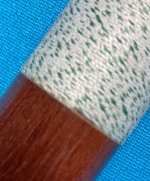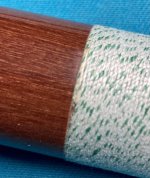skiergd011013
Well-known member
This cue is brand new. I noticed that there are two very small gaps/uneven spots in the wrap. One near the butt cap, and one near the forearm. Is this normal? Just the starting and stopping points during the wrapping process perhaps? Again, very small. Im just curious. Hopefully its just me being picky and there is no issue.










